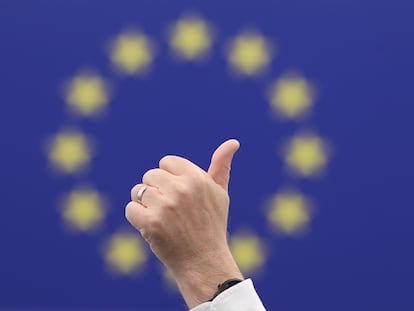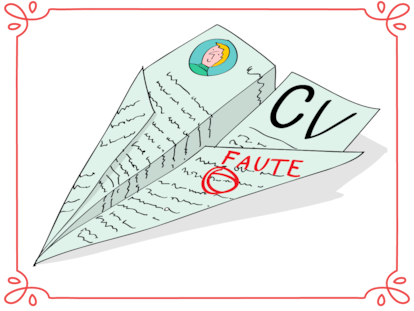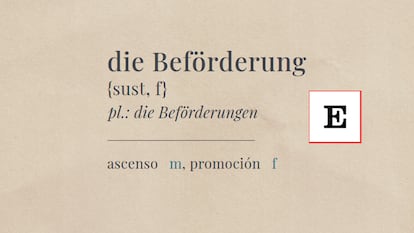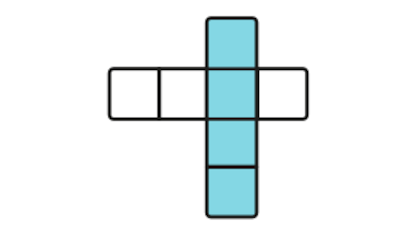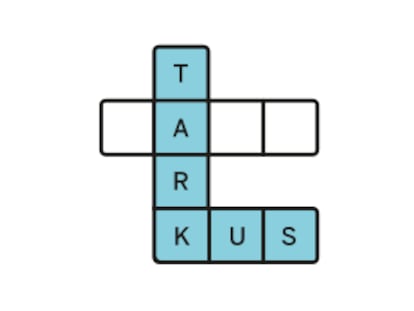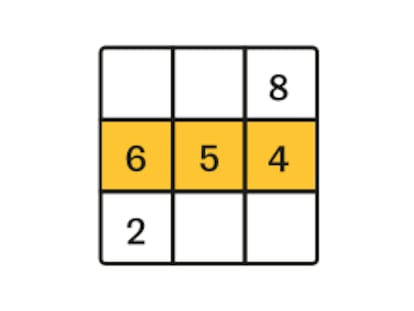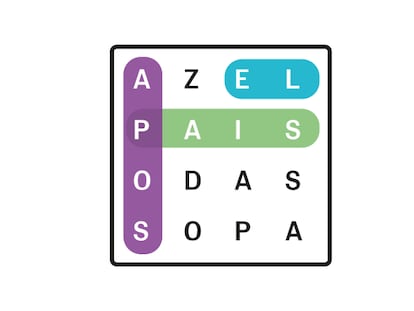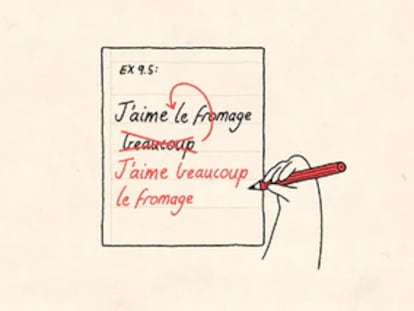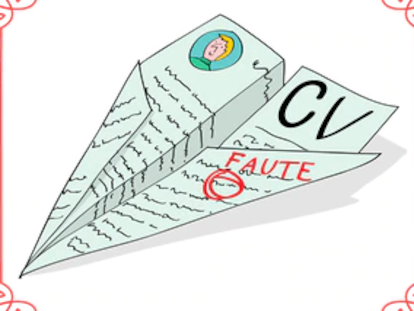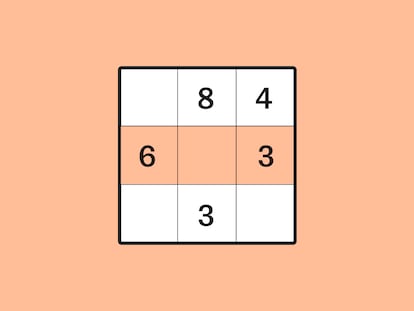Why Trump caved in to the markets and paused tariffs
The blow to public debt was the final straw, following the market crash, internal criticism, and warnings from investors and business leaders
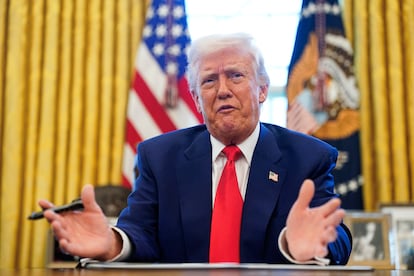

Donald Trump couldn’t handle the pressure for even a week. After launching a global trade war on his third “Liberation Day,” the U.S. president was forced to reckon with the reality that he was steering the country — and with it, the global economy — toward a recession. The breaking point came with a sharp selloff in Treasury bonds. Before that, a plunging stock market, internal criticism, and warnings from investors and business leaders had already put him under intense pressure. His resolve was being tested, and it buckled earlier than expected.
On Wednesday, Trump announced a 90-day partial truce in the trade war — excluding only China — and at the same time escalated his measures against Beijing. The move weakened his negotiating position, precisely what he had hoped to avoid.
No, it wasn’t all part of a master plan, as his aides claimed in an attempt to save face. Trump admitted that he decided to change course on Wednesday after a few days of reflection. “It probably came together early this morning,“ he said during a photo op with race car drivers at the White House.
Trump implied that the market reaction had played a key role in his decision. “Over the last few days it looked pretty glum,” he said. “I thought that people were jumping a little bit out of line. They were getting yippy, you know. They’re getting a little bit … afraid,” he admitted.
Until Tuesday, Trump seemed delighted that many countries were demanding negotiations and offering concessions. “These countries are calling us up, kissing my ass,” he said mockingly at a dinner with Republican congressmen, adding: “I know what the hell I’m doing.” A long-time advocate of tariffs, he initially shrugged off the market turbulence, imagining a world yielding to his demands. But his strategy didn’t go to plan.
In recent days, fear had spilled over into the bond market, where losses deepened on Wednesday. U.S. Treasury bonds — typically viewed as risk-free, a safe haven in turbulent times — were being sold off amid the chaos triggered by Trump’s actions, pushing yields ever higher. Even the dollar was trading lower.
On Wednesday, Trump was asked directly about the turmoil in that market. “People were getting a little queasy,” he admitted. “The bond market is very tricky. I was watching it, but if you look at it now, it’s beautiful.”

Yields on 30-year Treasury bonds had surged past 5%, up from 4.4% the week before. Concerns grew that foreign investors, particularly China — one of the largest holders of U.S. debt — were reducing their holdings. With trillions in U.S. debt up for refinancing, this shift — an unexpected setback — raised fears of a broader financial crisis. Former Treasury secretary Larry Summers even warned that Trump could be directly responsible for triggering one.
The administration’s erratic but aggressive trade policy was poised to lead to rising prices, plummeting corporate stock prices, and higher borrowing costs. The threat of recession was looming larger by the day. Investor Bill Ackman warned of an “economic nuclear winter.”
Warnings from corporate leaders added to the pressure. On Wednesday, Delta Air Lines CEO Ed Bastian said the company was preparing for a recession. Jamie Dimon, chairman of JPMorgan — the largest bank in the United States — said he thought it was “perfectly reasonable” to conclude that global trade was unfair, but stressed that it was necessary to “negotiate some trade deals” and warned of recession risks. “I’m taking a calm view. But I think it could get worse if we don’t make some progress here,” Dimon said in a Fox News interview, which Trump later admitted to watching.
At the opening bell, Trump posted on social media that it was “a great time to buy.” He followed through on that sentiment later that day. At 1:18 p.m. Washington time, he shared: “Based on the fact that more than 75 Countries have called [...] to negotiate [...] and that these Countries have not, at my strong suggestion, retaliated in any way, shape, or form against the United States, I have authorized a 90 day PAUSE, and a substantially lowered Reciprocal Tariff during this period, of 10%, also effective immediately.” The tariffs had been announced last Wednesday and had only been in effect for a few hours.
Trump met with key Cabinet members, including Treasury Secretary Scott Bessent and Commerce Secretary Howard Lutnick, before posting the message. “We didn’t have access to lawyers or — it was just wrote up. We wrote it up from our hearts, right? It was written from the heart, and I think it was well written too,” he later explained.
The stock market responded with a dramatic rebound. By the close of trading, the S&P 500 had risen 9.5%, and the Nasdaq jumped 12%. Nvidia alone gained 19%, adding $440 billion in value — the largest single-day market cap gain ever recorded.
China punished
While de-escalating globally, Trump simultaneously ramped up pressure on China, raising tariffs on Chinese goods to 125% in retaliation for Beijing’s latest moves. Combined with a 10% universal tariff and ongoing 25% duties on steel, aluminum, cars, and components, the current tariff package is the most extensive in over a century. Although the market welcomed the partial truce, the broader economic impact of these tariffs could still slow growth and fuel inflation.
Trump’s admission that market panic had driven his decision put several close aides, including White House Press Secretary Karoline Leavitt — who often criticizes the media — in a difficult position.
“Many of you in the media clearly missed The Art of the Deal. You clearly failed to see what President Trump is doing here,” said Leavitt.
What happened was “Trump’s strategy all along,” claimed Bessent — even though he was reportedly among those urging a course correction.
Stephen Miller, Deputy Chief of Staff, went even further: “You have been watching the greatest economic master strategy from an American President in history,” he posted on X.
A three-month period for negotiations now opens. Until now, it wasn’t clear whether Trump’s trade war was aimed at securing quick, “phenomenal” concessions or was part of a longer-term strategy to push for industrial reshoring. At this stage, neither has happened. Trump has walked back most of his tariffs without securing anything in return. His bargaining position is now weaker. And it’s become clear the U.S. cannot afford to declare a trade war on the entire world at once.
Trump even floated the possibility of granting exemptions to companies hit hardest by the tariffs. When asked on Wednesday, he said: “We’re going to take a look at it. There are some that, by the nature of the company, get hit a little bit harder, and we’ll take a look at that.”
When asked how he would determine which companies might receive such an exemption, Trump responded, “instinctively.” “You almost can’t take a pencil to paper. It’s really more of an instinct than anything else,” he said.
“You have to be able to show a little flexibility,” Trump added — just days after bluntly declaring: “My policies will never change.”
Sign up for our weekly newsletter to get more English-language news coverage from EL PAÍS USA Edition
Tu suscripción se está usando en otro dispositivo
¿Quieres añadir otro usuario a tu suscripción?
Si continúas leyendo en este dispositivo, no se podrá leer en el otro.
FlechaTu suscripción se está usando en otro dispositivo y solo puedes acceder a EL PAÍS desde un dispositivo a la vez.
Si quieres compartir tu cuenta, cambia tu suscripción a la modalidad Premium, así podrás añadir otro usuario. Cada uno accederá con su propia cuenta de email, lo que os permitirá personalizar vuestra experiencia en EL PAÍS.
¿Tienes una suscripción de empresa? Accede aquí para contratar más cuentas.
En el caso de no saber quién está usando tu cuenta, te recomendamos cambiar tu contraseña aquí.
Si decides continuar compartiendo tu cuenta, este mensaje se mostrará en tu dispositivo y en el de la otra persona que está usando tu cuenta de forma indefinida, afectando a tu experiencia de lectura. Puedes consultar aquí los términos y condiciones de la suscripción digital.
More information
Archived In
Últimas noticias
Most viewed
- Sinaloa Cartel war is taking its toll on Los Chapitos
- Oona Chaplin: ‘I told James Cameron that I was living in a treehouse and starting a permaculture project with a friend’
- Reinhard Genzel, Nobel laureate in physics: ‘One-minute videos will never give you the truth’
- Why the price of coffee has skyrocketed: from Brazilian plantations to specialty coffee houses
- Silver prices are going crazy: This is what’s fueling the rally
